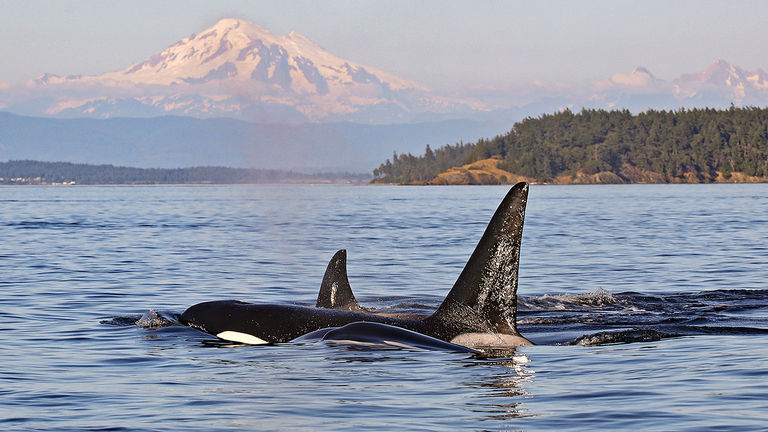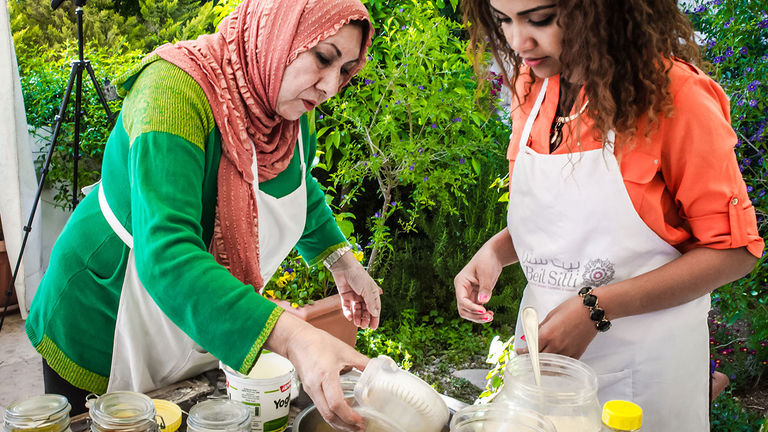This past April, while sitting in a small-group discussion during Tourism Cares’ Meaningful Travel Summit in Norway, I was first confronted with a notion that would resurface again and again over the coming months in conversations about “sustainable travel:” The term has, essentially, lost all meaning.
Don’t get me wrong; we all understand that it’s broadly used to define eco-friendly and/or community-positive travel options. But that very broadness is at the heart of the problem the industry is now struggling with.
An increasing number of travelers report caring about this issue: American Express’ 2023 Global Travel Trends Report found that 76% are interested in vacations with minimal environmental impact, and 65% want to book with brands that are committed to improving their ecological footprint. And in response, more companies and suppliers are looking to appeal to that demographic. However, it can be hard to know if their actions actually back up their claims, or if they just talk a big game (a phenomenon known as “greenwashing”).
“One of my biggest concerns is that sustainability is, for lack of a better term, the wild West right now,” said Joshua Bush, CEO of Avenue Two Travel. “There are so many different certification organizations, ranging from the rigorous to the self-designated. And, just as clients may have a preconceived notion about sustainability, many advisors do, too. It’s a challenge to know where to start.”
One of my biggest concerns is that sustainability is, for lack of a better term, the wild West right now.
So, how can travel advisors who want to promote and sell sustainable travel better understand the concept and effectively translate it for clients?
Here are a few ways advisors can start to cut through the noise.
Knowledge Is Power
Available information on sustainable policies and practices oscillates wildly between too much and not enough: Many travel advisors feel either inundated with a slew of confusing data, or they feel that they can’t access the specifics they need from suppliers.
In fact, a recent Need to Know research survey, conducted by TravelAge West, found that 73% of advisors feel it is somewhat or very difficult to find information on a supplier’s sustainability practices; 20% don’t know what to look for or find it all too confusing; and 18% feel that information in general is too hard to find. In the end, the majority of respondents (76%) feel that more education on this topic is needed.
Realizing a lack of understanding was a barrier for many advisors, Bush decided to do something about it. While leading a recent effort to get his agency B Corp Certified (a process that rigorously vets a company’s social and environmental performance), he engaged the services of consultant Rose O’Connor, founder and CEO of Sustainable Wanderlust and a former travel advisor, to assist with the certification and simultaneously create a training program for his agency’s advisors. (They hope to eventually make the training available to agents outside of Avenue Two, as well.)
Bush says the course covered everything from greenhouse gases and keeping money within communities to environmental, social and corporate governance (ESG). It also taught advisors questions to ask suppliers about their policies, such as “What’s your waste management strategy? What’s your local hiring strategy? And what are your carbon emissions per guestroom?”
“The objective is that the more advisors ask these questions, the more it will become the regular course of business for suppliers [to have the answers],” he said.
Another important aspect of the training involved how to approach the topic with clients.
“We [explored] how you can have a non-political, non-judgmental conversation with your client about sustainability, and craft an itinerary that is not only better for the environment, but actually lends itself to a better experience for the traveler,” Bush said, naming slower, deeper travel (as opposed to rapid destination hopping) as a good example of an itinerary change that can benefit both the planet and the client.
When considering how to approach client conversations, he says it’s all about figuring out how to present options to the traveler so that “the sustainable choice isn’t just the right choice, but it’s the obvious choice.”
AAA Travel, meanwhile, recently partnered with travel industry nonprofit Tourism Cares on a sustainability training program for its advisors, who reported “that it gave them the confidence and the language to have a conversation about sustainability with their clients,” according to Debbie Haas, vice president of travel for AAA – The Auto Club Group.
While that program was exclusive to AAA agents, Tourism Cares has released a similar training module that is available on its website for anyone to access (after creating a free account).
 Advisors should look for suppliers with strong animal welfare policies.
Advisors should look for suppliers with strong animal welfare policies.
Credit: 2023 Tourism CaresA few of Tourism Cares’ top tips? Look for suppliers that have a measurable climate action plan; have reduced single-use plastics and other waste/energy usage; have made an effort to localize their supply chain (sourcing local food and beverages, for example); are committed to animal and child welfare; and have policies regarding diversity, inclusion and accessibility. These are just a few good signs that a supplier is on the right track.
When vetting a potential partner, John Sutherland, director of community impact at Tourism Cares, suggests that advisors ask themselves: “What are the claims being made? And are they demonstrating any progress toward these claims?”
Find Your Niche
Another major takeaway from Avenue Two’s training? It’s time to stop saying “sustainable.”
“The word ‘sustainability’ is too big, too ambiguous, too politically charged and people can’t relate to it,” O’Connor of Sustainable Wanderlust said. “So, I encourage advisors to get their message across without even using it. Instead, make it really specific and personal — because when we start talking about things that are real and tangible, you’re going to be hard-pressed to find a traveler who doesn’t care about conservation or clean oceans. The issue needs to be refined in the mind of the advisor, so it can be reframed for the consumer.”
The word ‘sustainability’ is too big, too ambiguous, too politically charged and people can’t relate to it.
As a way to break down the wider concept, O’Connor suggests that advisors look at the United Nations’ 17 Sustainable Development Goals — targets include affordable and clean energy, no poverty, sustainable cities and communities, gender equality and more — then focus on a specific issue or two that resonate with them.
 Authentic local culture is in demand among travelers.
Authentic local culture is in demand among travelers.
Credit: 2023 Tourism CaresLydia Alvita, founder of Aiden and Ivy and one of the advisors who took the Avenue Two course, was surprised to learn that sustainability encompassed so many different topics, and found narrowing her focus to be a helpful selling tool.
“I went with the No. 6 goal, which is clean water and sanitation,” she said. “Then I started looking at what travel companies are working on it. How does this resort give back? Are they points that you can start speaking to your clients about.”
Alvita says that when she qualifies clients, she listens closely for clues about the things that matter to them, and then ties their wants and needs into a sustainability tenant.
“If I hear you’re looking for something family-oriented, I might suggest a hotel that’s in its third generation of family ownership,” she said, noting that this will support locals and keep funds in the community. “While I’m listening to what [clients] want, I’m also giving them a kernel of ‘this is how you’re actually helping.’”
While I’m listening to what [clients] want, I’m also giving them a kernel of ‘this is how you’re actually helping.’
And finding these tie-ins might be even easier than advisors realize. Want to help sustain and promote local cultures? American Express’ trends report noted that 88% of travelers want to visit a place where they can truly experience a local culture. Hoping to reduce overtourism? The same report found that 71% of respondents want to go to off-the-beaten-path destinations. Aiming to support small businesses? Eighty-eight percent agree that dining and shopping at local businesses creates a more authentic experience while traveling.
The bottom line, according to O’Connor: “The more you can narrow down the elements of sustainability to what’s deeply meaningful for you, the easier it’s going to be to deliver that message to your clients, and for your clients to really find that value.”
Think Big — But Start Small
Finding a niche within the sustainability umbrella can make a big difference in how advisors think about and sell travel. But taking a more responsible approach doesn’t all revolve around big-picture thinking; it’s often about small changes that can, ultimately, add up to a major impact.
Avenue Two’s Bush suggests thinking about ways to “make even minor, incremental changes,” such as swapping a short-haul flight with a train or ferry ride, incorporating a give-back day or introducing an eco-conscious hotel into an itinerary.
“If 10, or 100, or 1,000 people change their itineraries just a little bit, we’ve made a fantastic impact,” he said. “And you don’t have to go and say, ‘I’ve built a green itinerary.’ It’s simply, ‘This is the itinerary I have put together, and here’s why I think you’ll have an enriched experience with it.’”
Haas of AAA – The Auto Club Group says that undergoing sustainability training also “made it easier [for our advisors] to sell the shoulder season and the off-season. Basically, it doesn’t cost as much, it’s not going to be as crowded, and clients will feel better about their experience because they’re not overburdening the local infrastructure.”
 Community-based activities add meaning to a trip.
Community-based activities add meaning to a trip.
Credit: 2023 Tourism CaresAdding even one meaningful experience to an itinerary — think: a home-hosted meal, a handicraft-making demo, an Indigenous-led tour or a visit to an artisan market — is another simple way to enrich a client’s experience and provide benefit to a destination. To find such experiences, advisors can turn to Tourism Cares’ Meaningful Travel Map, which lists vetted options for sustainable and community-led products, services, accommodations and tours. While the map currently only covers select destinations, the team is working to expand it.
“It’s plug-and-play,” Sutherland said of the tool. “It’s a turnkey way of finding impactful organizations that can be folded right into a curated journey. That’s an easy way to get started.”
Another of advisor Altiva’s strategies is to subtly raise clients’ overall awareness of sustainability, so they will start to think about this issue if they haven’t before.
“I have clients who want to fly to the South Pacific, and they really want to use United Airlines; that’s who they like,” she said. “And I said, ‘Did you know that United is actually moving toward using [sustainable] fuel?’ And they went, ‘Oh no, tell me more.’ That’s how we get into those conversations.”
It’s efforts like these that demonstrate the potential advisors have to be changemakers and influencers in this space — maybe even more than they realize.
“You don’t need to be an expert in sustainability to make a difference, especially if you’re an advisor,” Sutherland said. “Advisors have so much power in the industry — in influencing their guests, but also, in the upward direction of forcing suppliers to answer questions and showing them the demand for sustainability. What I really want an advisor to know is: You have a lot of power to make change.”